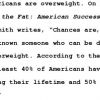 Overview
Overview
A creator of a text or document will use a citation to demonstrate that the information presented is credible. Citations are also important for giving due credit to the ideas of others. They are therefore a critical aspect of academic and scholarly work and are used whenever a writer wishes their ideas to be taken seriously.
Any time information is gathered from a source and presented in the text of a document (be it print or electronic), the author must cite the origin of that information. The clearest method of referencing and citing a source is done by placing the pertinent information in quotations within the context of the document.
These examples are only meant to give a basic overview of when and how to cite a source in a written work. More information will be added soon on other pages regarding a discussion of styles (such as APA and MLA), and citing web pages.
See online resources.
Basic Examples
Provided are examples that show how to reference a book in a research paper. Please keep in mind that the information presented here is fictional and provided for use as examples.
Imagine you are writing a report on diets. You have a book by John Smith, MD called Cut the Fat: American Successes at Losing Weight. On page five, Dr. Smith writes, “Chances are, every American has known someone who can be described as physically overweight. According to the latest research, at least 40% of Americans have weight problems during their lifetime and 50% of them seek medical help.”
You want your first paragraph to introduce the American weight problem. You could write:
The source is cited in that the reader knows that the assertion “Many Americans are overweight” is backed up by a credible source (someone with a MD is reliably credible). Also, the name of the author and book are provided and the appropriated text is presented in quotations marks to show that that portion of the text is from a different source.
Let’s tinker a bit and add what is called a parenthetical citation:
Notice that the book title, author, and page number were taken out of the text. This is okay because by adding the parenthetical documentation at the end of the quote, the author and page number are provided.
Assuming that you have more than one source for this paper, there will be a list of references (commonly called a Works Cited page) at the end of the document that list, in alphabetical order, the author’s full name, full title of the book, date published, and other publication information is provided so the curious reader may refer to that book on her own. This reference may look similar to this:
All works cited in the text of the document must have a reference at the end of the paper. When referencing a whole book, page numbers are generally not needed and are only necessary near the quoted or paraphrased information in the text in order to show the reader precisely which page the information appeared on.
There is enough information about the source given contextually, or in the text in the first example to steer the reader to the correct Works Cited listing and no parenthetical documentation is needed.
In the next example the author’s name has been reintroduced into the text. It is therefore only necessary to provide the page number parenthetically.
When taking information from a source an adding it into your own text, you may find that you only need phrases:
It is also possible to paraphrase, or summarize, the information, thereby making quotes unnecessary:
Although quotes are not used here, it remains especially important to provide a reference so that the reader does not have to wonder how the author knew that bit of information.
Basic TipsSuch “borrowed” information should be used to further the writer’s own argument and should be presented in context.The information appropriated or “borrowed” from an outside source should be seamlessly placed within the context of the text.The writer should take care to present the “borrowed” ideas as the original author intended. They should not be taken out of context or misconstrued to meet the writer’s needs. It is important to provide as much information about the source as necessary in the citation.
, How To Quote– A Guide to Citations www.ozeldersin.com bitirme tezi,ödev,proje dönem ödevi
